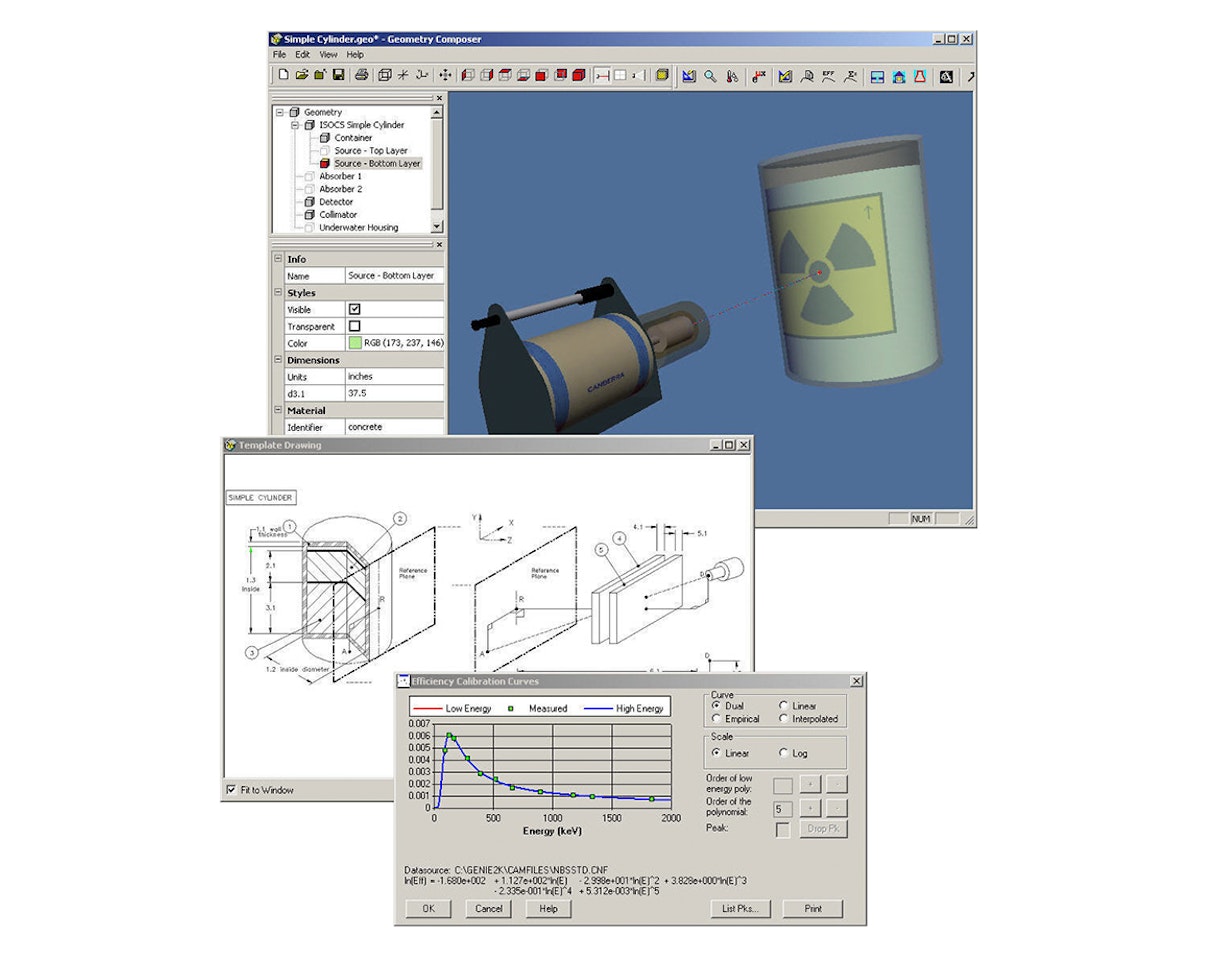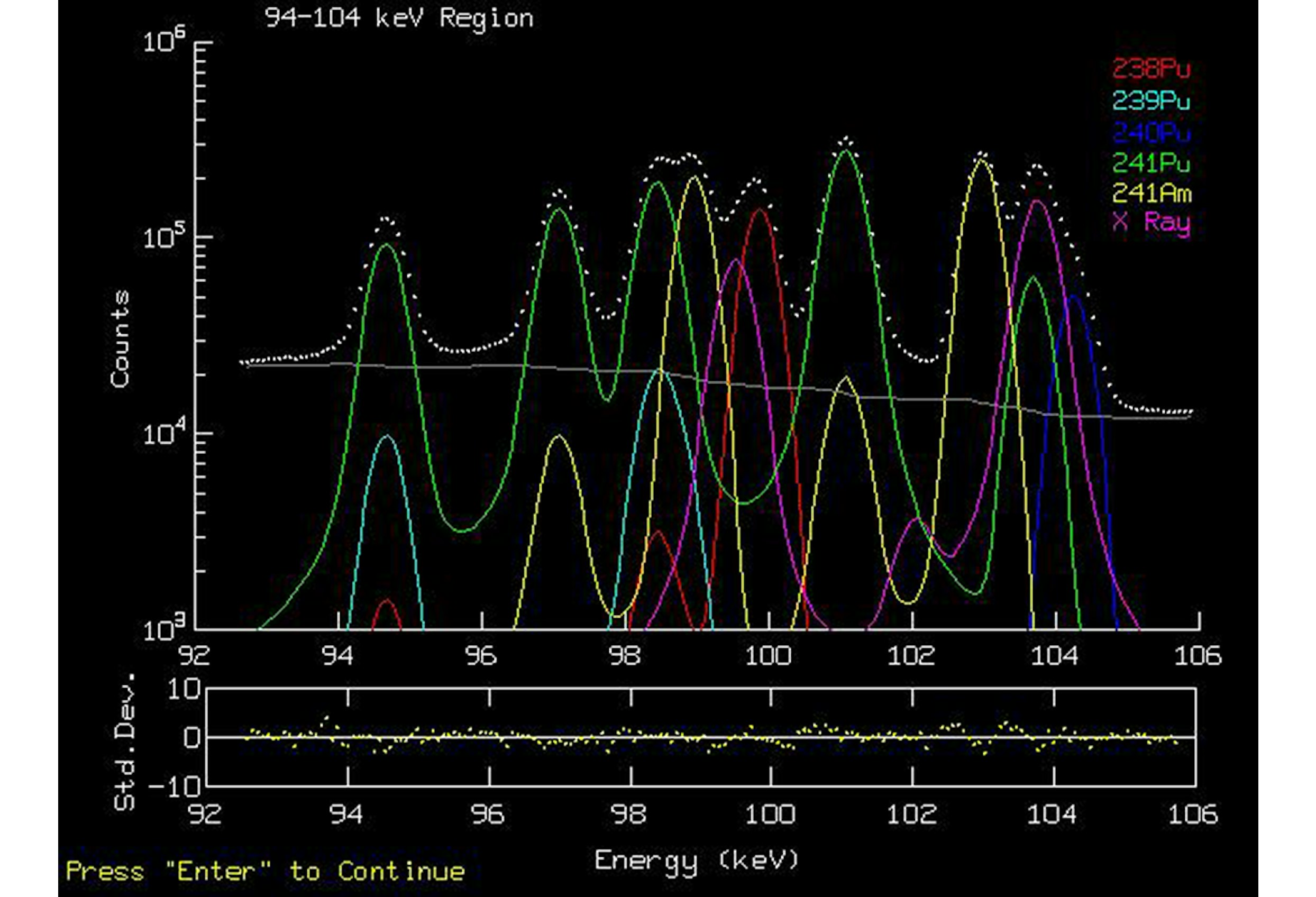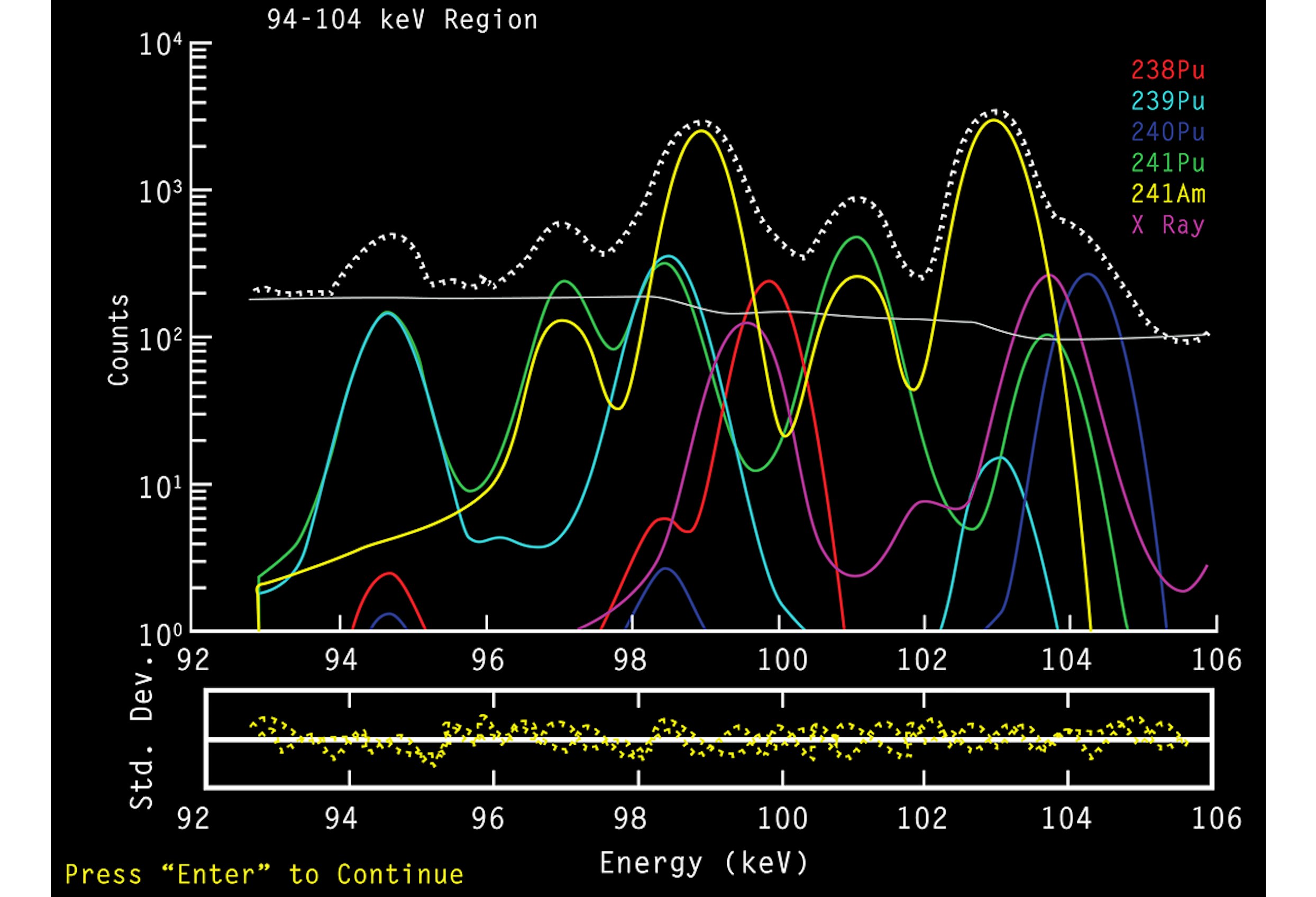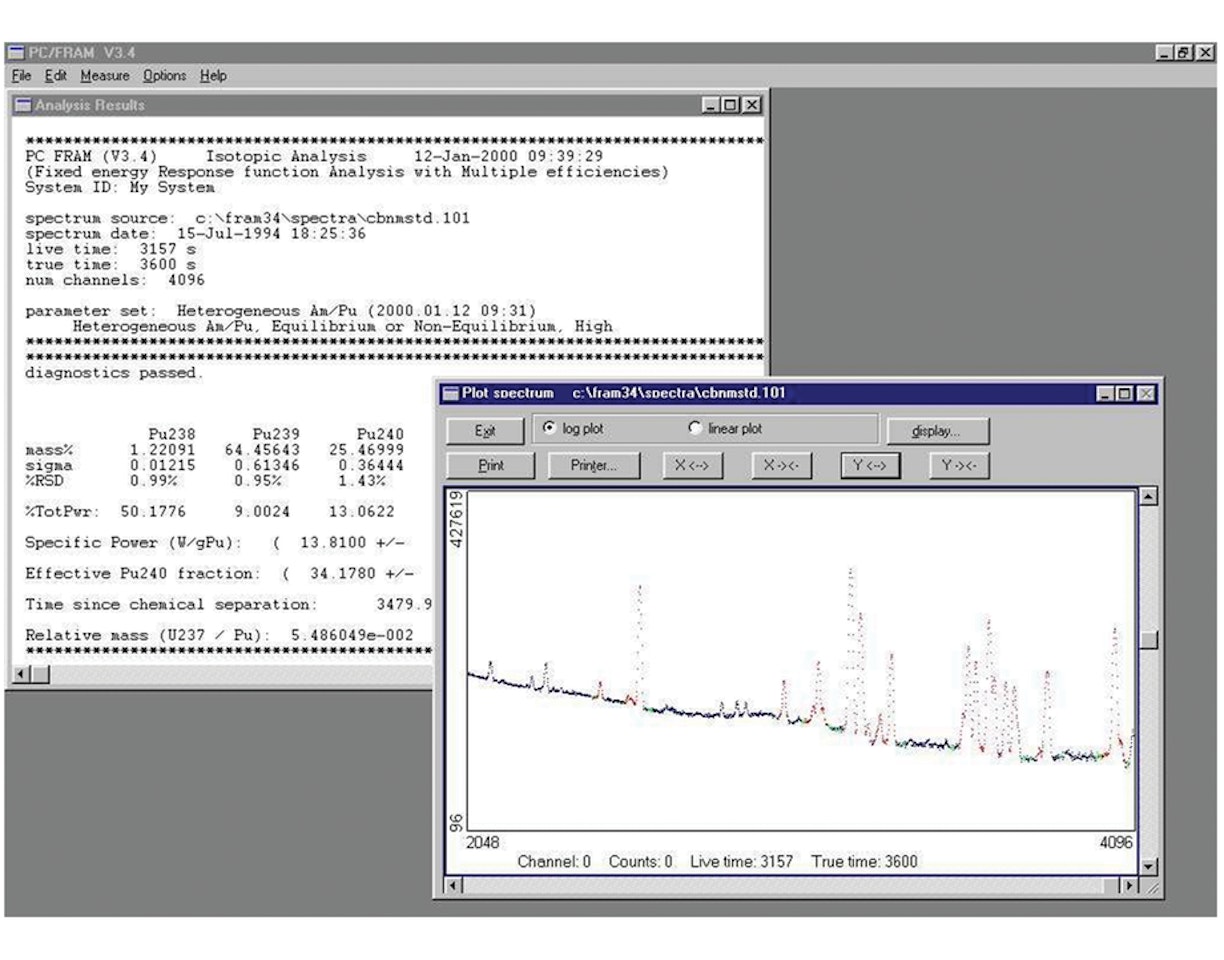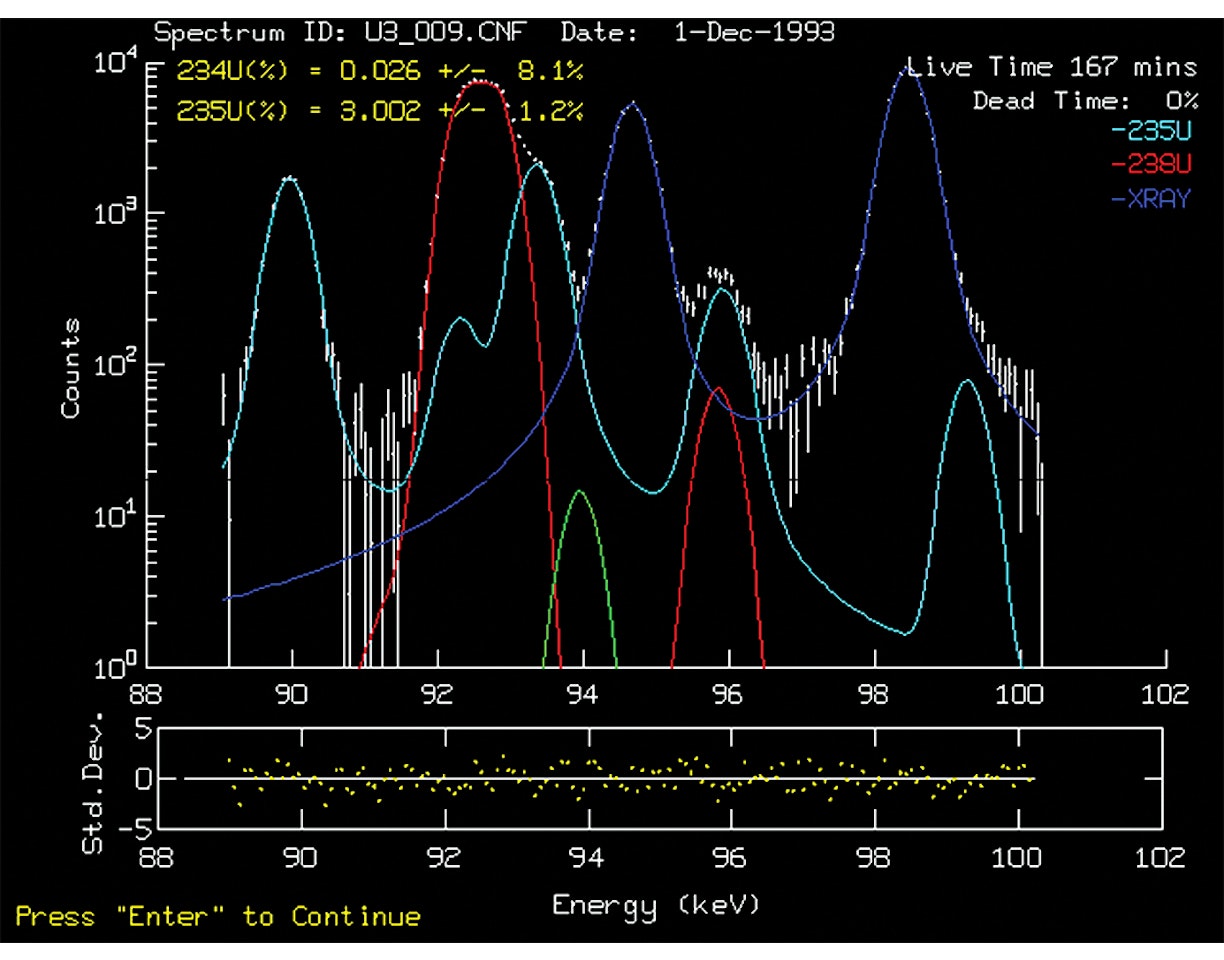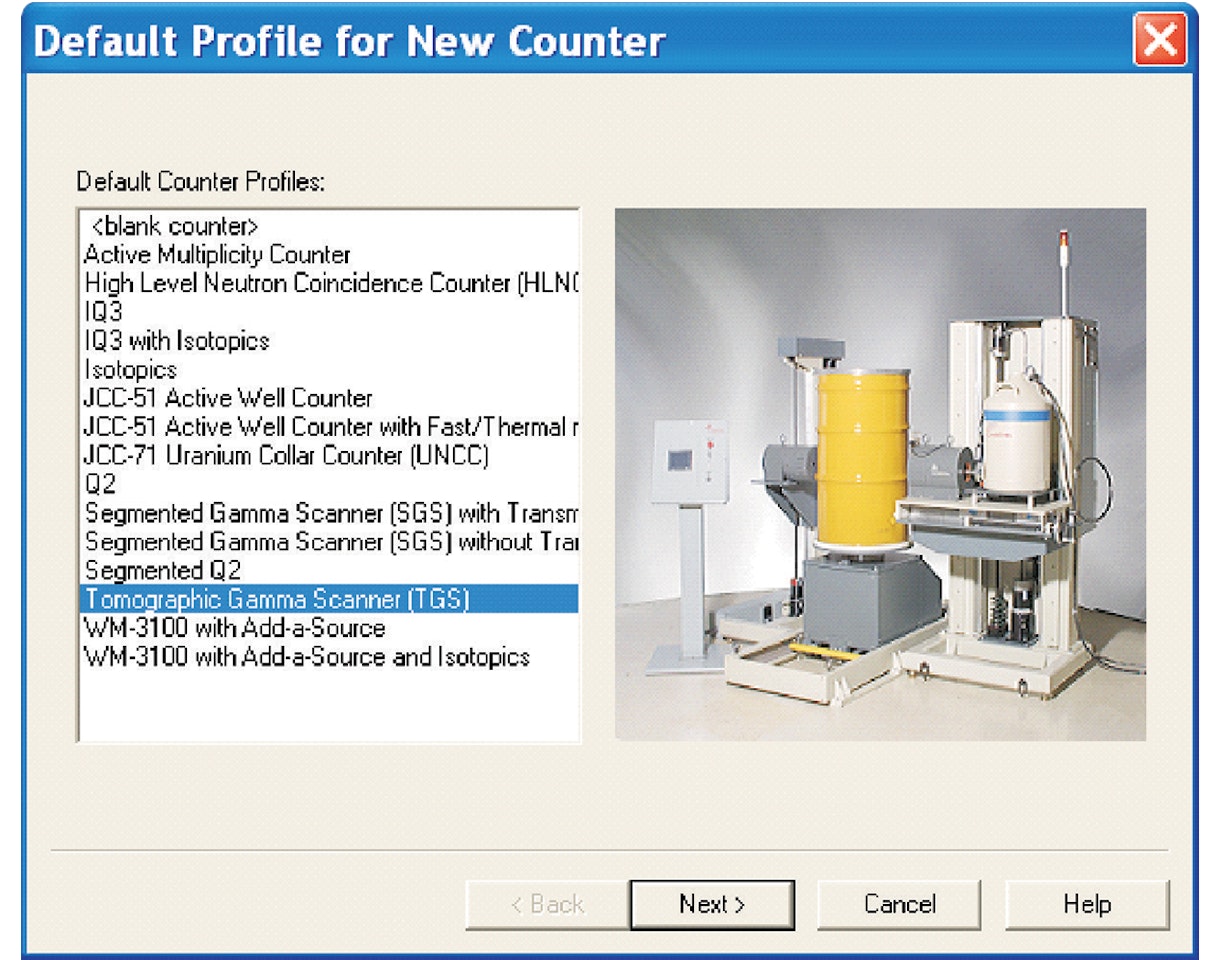Description
The determination of relative plutonium isotopic concentrations through non-destructive assay is a fundamental requirement in most waste management and safeguards applications. Yet, complex samples, varying container shapes and materials, and other complications have historically made it one of the more difficult measurements.
Multi-Group Analysis (MGA software) was designed to improve the accuracy of these measurements over traditional methods. In addition to the primary application of measuring Pu isotopics, MGA can be used to determine other actinides such as 235U, 238U, 237Np and 241Am as well.
More recently, Mirion has added its exclusive enhancements to improve the measurement results obtained under the difficult conditions encountered in Waste and Decommissioning & Decontamination (D&D) applications. These applications often result in low-activity, low-counting statistics spectra typified by measurements on large containers. Additional enhancements have simplified or eliminated the numerous setup and calibration steps necessary with earlier MGA versions and other methodologies. Thus it can be used in a broader range of applications involving routine, repetitive measurements.
For standard 8K spectra the MGA analysis is based on the spectral information available in the 0-600 keV range of the energy spectrum. (When only 4096 channels are available the operating range is from 0-300 keV.) The primary analysis in both cases is performed using the multiplet region at 94-104 keV. While this region is the best choice for gamma line intensity (and consequently detection sensitivity) for several of the plutonium isotopes, it is a very complex region because it also consists of gamma ray peaks from plutonium progeny as well as numerous x-rays. In order to unfold this complex multiplet region, MGA software automatically adjusts the energy and peak shape calibration for each spectrum using peaks that are characteristic of all plutonium samples – 59 keV, 129 keV, and 208 keV. The characteristic plutonium lines at 129 keV and 208 keV are always required to be present. For special cases where the low-energy region is not available for analysis (if the Pu sample is stored in a Pb-lined container for example), a 'high-energy-only' option exists to force the analysis. A two-detector mode is available as well, if added information from regions above 600 keV is desired in the analysis.
MGA software internally develops an intrinsic efficiency curve based on several energy lines from three isotopes. The efficiency curve takes into account the physical processes that affect the observable gamma ray intensities at different energies, such as the detector efficiency as a function of energy, and gamma ray attenuation in absorbing materials between the sample and the detector as well as within the plutonium sample itself. Using the energy, shape and intrinsic efficiency information, MGA calculates a response spectrum consisting of peak energies (positions), relative peak intensities, and an accurate peak shape of each peak in the 94-104 keV peak region. Accommodation is made for the Gaussian broadening of gamma ray peaks and the Lorentzian shape of the x-ray peaks. Isotopic concentrations are directly calculated for all Pu isotopes, except 242Pu which is derived from the other isotopes.
